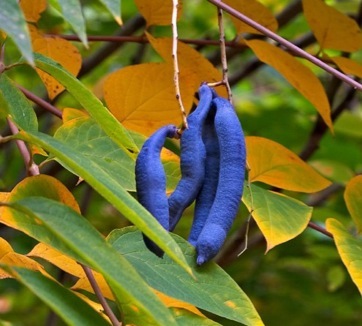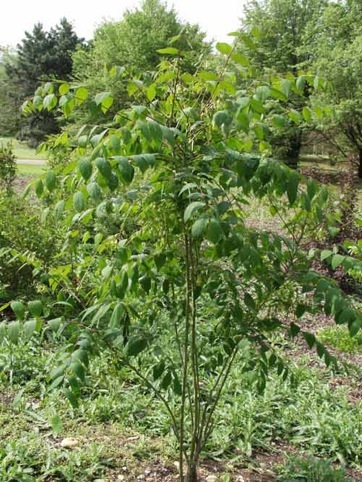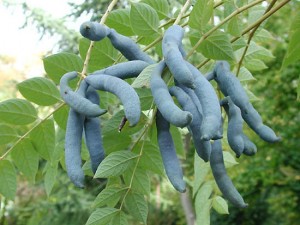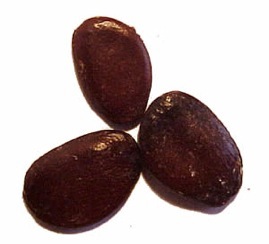Decaisnea fargesii: True Ghoul Blue
There are three Dead Man’s Fingers: A seaweed, a mushroom, and a shrub, all so-called because of the way they look.
The seaweed, covered elsewhere on this site is Codium fragile. Soft and velvety, it floats eerily like a hand, and is edible, as are most seaweed. The mushroom, Xylaria polymorpha, like most mushrooms, is not edible. When young it not only looks like fingers reaching out of the ground but it even has fingernail-like tips. The third Dead Man’s Fingers is Decaisnea fargesii, an up and coming and escaping ornamental shrub.
This is a frost-hardy shrub that likes cooler weather and is native to the Himalayas and Western China where it can be found from 6,000 to 10,000 feet. In the United States it is found in zones 6 to 10, or down to about -10° F. You can find it in landscaping in such diverse locales as Kentucky and Ohio to Oregon and Washington. It is also escaping into the wild. It’s main calling as an ornamental is that it has blue, edible, fruit. Other than the fruit, to a North American eye the shrub resembles a small black walnut
Whether there are one or two species of Desaisnea is a bit of a debate. Some say the D. fargesii is from China with the blue fruit, and others say there is a Decaisnea insignis from Inida with yellowish fruit. The Chinese one, D. fargesii, is the most commonly cultivated and thus escaped into the countryside. Oddly, it is in the chocolate vine family, Lardizabalaceae. The fruit’s white, juicy phlegm-like pulp, ranges from bland to very sweet. The watermelon-like seeds are not eaten.
The genus name is no help at all in identification. Decaisnea ( deh-KANE-ee-uh) is named for Joseph Decaisne, a 19th century Belgian-born French botanist, horticulturist, and director of the Jardin des Plantes Paris. The species fargesii (far-GHEE-zee-eye) was “discovered” and named for Pere Paul Guillaume Farges (1844-1912) a French missionary and plant collector who lived in China. I always have a problem with a westerner “discovering” a plant. The locals there had been eating or using it for thousands of years.
Insignis is often translated to mean remarkable or outstanding but the more accurate Latin use would be “uncommon.” Insignis virtus was a common phrase meaning uncommon valor. It is said two ways, in-SIG-niss or IN-sig-niss. The D. fargesii is also called Blue Sausage Fruit, Blue Cucumber Shrub and Blue Bean Tree. And if you are wondering, Lardizabalaceae is said lahr-dee-zab-uh-LÂ-see-ee.
Oh, and to add to the fun, the fruit ripens around halloween.
Green Deane’s “Itemized” Plant Profile: Dead Man’s Fingers
IDENTIFICATION: Decaisnea fargesii: A deciduous shrub to small tree, growing to 25 feet tall. Leaves are pinnate to three feet long, with 13-25 leaflets, each leaflet up to six inches long and four inches wide. Blossoms are produced in drooping panicles to 18 inches long, each flower greenish-yellow, to an inch in diameter, with six sepals and no petals. The fruit is a soft greenish-yellow to bluish pod-like follicle to four inches long and and inch in diameter, filled with an edible transparent glutinous jelly-like pulp with numerous flat black watermelon-like seeds, up to a half inch in diameter.
TIME OF YEAR: Flowers in summer, fruits in September to October depending upon the climate.
ENVIRONMENT: Full sun, rich soil, neither very hot or very cold.
METHOD OF PREPARATION: Jelly-like pulp eat raw out of hand






